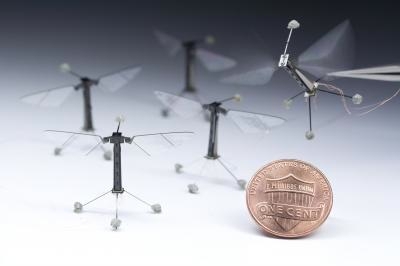Robotic insect takes off
US researchers have demonstrated a tiny robotic flying insect that could lead to a new generation of miniature drones.
US researchers have demonstrated a tiny robotic flying insect that could lead to a new generation of miniature drones.
The RoboBee developed at Harvard University can flap its two wafer-thin wings 120 times per second, almost faster than the human eye can see and representing a breakthrough in piezoelectric movement.

The developers say the project could lead to tiny unmanned aerial vehicles (UAVs) for environmental monitoring, search-and-rescue operations or crop pollination, but that the materials, components and manufacturing techniques developed along the way could prove even more significant.
‘This project provides a common motivation for scientists and engineers across the university to build smaller batteries, to design more efficient control systems, and to create stronger, more lightweight materials,’ said principal investigator Prof Robert Wood, in a statement.
‘We had to develop solutions from scratch, for everything. We would get one component working, but when we moved onto the next, five new problems would arise. It was a moving target.’
Register now to continue reading
Thanks for visiting The Engineer. You’ve now reached your monthly limit of news stories. Register for free to unlock unlimited access to all of our news coverage, as well as premium content including opinion, in-depth features and special reports.
Benefits of registering
-
In-depth insights and coverage of key emerging trends
-
Unrestricted access to special reports throughout the year
-
Daily technology news delivered straight to your inbox











Water Sector Talent Exodus Could Cripple The Sector
Well let´s do a little experiment. My last (10.4.25) half-yearly water/waste water bill from Severn Trent was £98.29. How much does not-for-profit Dŵr...